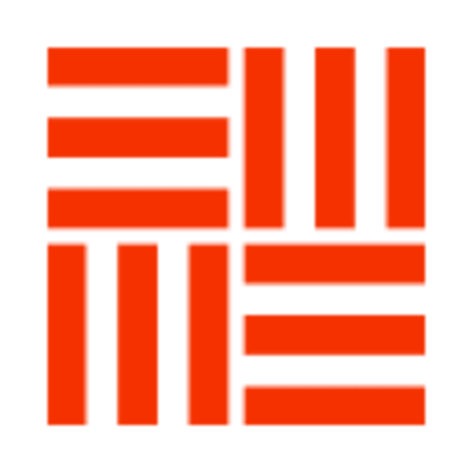The Power of Graphic Design: Elevating Your Brand and Visual Communication
In today’s visually-driven world, graphic design has become an essential part of business and personal branding. Whether it’s creating logos, brochures, social media posts, or website designs, graphic design plays a crucial role in communicating your message, capturing attention, and establishing a memorable brand identity. In this blog, we’ll explore the importance of graphic design, its impact on branding, and how businesses can leverage graphic design to improve their online presence and overall marketing strategy.
1. The Role of Graphic Design in Branding
Graphic design is more than just aesthetics; it’s a powerful tool for conveying your brand’s message and values. A well-designed logo, color scheme, and visual elements can tell your audience who you are, what you stand for, and what makes you unique.
A. Creating a Memorable Brand Identity
Your brand identity is the visual representation of your business. It includes everything from your logo and website design to the colors and fonts you use across all marketing materials. A strong, consistent brand identity helps establish trust with your audience and ensures your business stands out in a crowded market.
Key Elements of Brand Identity:
- Logo: A well-designed logo serves as the face of your business, making a lasting impression on your audience.
- Color Palette: Colors have psychological effects on consumers and can influence perceptions of your brand.
- Typography: The fonts you use in your branding should align with your brand’s tone and message.
Examples:
- Nike’s Swoosh: The iconic swoosh logo represents speed and movement, reflecting Nike’s core values. Learn more about Nike’s branding.
- Coca-Cola’s Red and White: The combination of red and white has become synonymous with Coca-Cola, creating a vibrant, energetic, and recognizable brand image.
B. Consistency Across Platforms
Graphic design ensures consistency across all platforms, whether it’s your website, social media profiles, or print materials. Consistency in design helps reinforce your brand’s message and makes it easier for customers to recognize your business.
Key Benefits of Consistent Design:
- Improved Brand Recognition: A consistent visual style across all touchpoints strengthens your brand’s presence in the minds of consumers.
- Professional Image: Consistent design communicates that your business is professional and trustworthy, enhancing customer confidence.
- Better User Experience: A cohesive design ensures that your audience can easily navigate your content, whether online or offline.
2. Graphic Design for Effective Communication
One of the primary goals of graphic design is to communicate a message in a visually appealing and understandable way. Whether it’s for marketing materials, presentations, or social media posts, effective design ensures that your message is clear, concise, and engaging.
A. Infographics and Data Visualization
Infographics are a powerful way to present complex information in a visually digestible format. By combining graphics with data, infographics help businesses communicate statistics, processes, and trends more effectively than text alone.
Key Benefits of Infographics:
- Easy to Understand: Infographics break down complex data into simple, easy-to-understand visuals.
- Engaging: Infographics are more engaging than plain text, making them shareable on social media and other platforms.
- Increased Retention: People are more likely to remember visual content, so infographics help increase information retention.
Examples:
- HubSpot Blog: HubSpot uses infographics to communicate marketing statistics and trends in an engaging and easily digestible way. Check out HubSpot’s infographics.
- Venngage: Venngage offers customizable templates to create infographics for any business need, from reports to social media posts.
B. Website and User Interface (UI) Design
The design of your website plays a crucial role in user experience (UX). A well-designed website is easy to navigate, aesthetically pleasing, and informative, helping to keep visitors engaged and drive conversions.
Key Benefits of Good UI/UX Design:
- Improved Navigation: A clean, intuitive layout makes it easier for visitors to find what they’re looking for, reducing bounce rates.
- Enhanced User Engagement: Visual design elements such as images, buttons, and typography keep users engaged with your content.
- Increased Conversions: A user-friendly website design leads to a better experience, which can result in higher conversion rates and increased sales.
Examples:
- Apple’s Website: Apple is known for its sleek, minimalist website design that focuses on user experience and showcases products in an engaging way.
- Airbnb’s UI Design: Airbnb has an intuitive and visually appealing website that makes it easy for users to search for listings and make bookings.
3. Graphic Design in Digital Marketing
In the world of digital marketing, graphic design plays a pivotal role in creating eye-catching ads, social media posts, email templates, and more. Engaging visuals capture your audience’s attention and make your marketing messages stand out.
A. Social Media Graphics
Social media platforms rely heavily on visuals to engage users. From Facebook and Instagram posts to LinkedIn banners and Twitter ads, graphic design ensures that your content catches the eye and encourages interaction.
Key Benefits of Social Media Graphics:
- Increased Engagement: Graphics such as images, videos, and animations generate more engagement on social media platforms compared to text alone.
- Brand Visibility: Eye-catching visuals help your posts stand out, leading to higher visibility in crowded social media feeds.
- Consistent Branding: Social media graphics help reinforce your brand’s identity and maintain consistency across different platforms.
Examples:
- Canva: Canva is a popular graphic design tool that allows businesses to create stunning social media graphics and marketing materials with ease.
- Adobe Spark: Adobe Spark helps businesses create professional-quality graphics for social media, web pages, and video stories.
B. Email Campaigns
Graphic design is also essential for creating visually appealing email templates that grab attention and drive action. A well-designed email layout improves readability, makes the content more engaging, and encourages users to click through to your website.
Key Benefits of Email Design:
- Higher Open Rates: A compelling subject line and engaging design elements increase the likelihood that your email will be opened.
- Improved Click-Through Rates (CTR): Well-designed emails with clear calls to action lead to higher CTRs and more conversions.
- Better User Engagement: Visually engaging emails create a more enjoyable experience for recipients, encouraging them to engage with your content.
Examples:
- Mailchimp: Mailchimp provides businesses with customizable email templates and design tools to create visually appealing campaigns.
- Campaign Monitor: Campaign Monitor offers email marketing solutions with beautiful email templates that are optimized for engagement.
4. The Future of Graphic Design
As technology continues to evolve, so does the field of graphic design. Innovations like artificial intelligence, augmented reality, and motion graphics are transforming how designers create and interact with visual content. The future of graphic design will likely see even more emphasis on immersive experiences, interactivity, and personalization.
Key Trends in Graphic Design:
- AI-Powered Design: AI tools are being used to streamline the design process, automate repetitive tasks, and even generate new design ideas.
- Motion Graphics and Animation: Animated graphics are becoming increasingly popular in digital marketing, as they capture attention and convey messages more effectively.
- Augmented Reality (AR): AR is creating new opportunities for interactive design, allowing users to engage with products or content in a more immersive way.
Examples:
- Figma: Figma is a cloud-based design tool that enables collaboration among teams in real-time, paving the way for the future of remote design work.
- Adobe XD: Adobe XD provides tools for creating interactive prototypes and designs, with a focus on user experience.
5. Conclusion
Graphic design is an essential aspect of modern business, from building a strong brand identity to improving communication and driving marketing efforts. By leveraging the power of design, businesses can create more engaging, memorable experiences for their audience and stand out in a competitive marketplace. Whether you’re designing a logo, website, or social media campaign, good design has the power to elevate your brand and enhance your overall business success.
To learn more about graphic design and how it can help your business grow, check out resources from Smashing Magazine, Adobe Creative Cloud, and Canva Design School.






